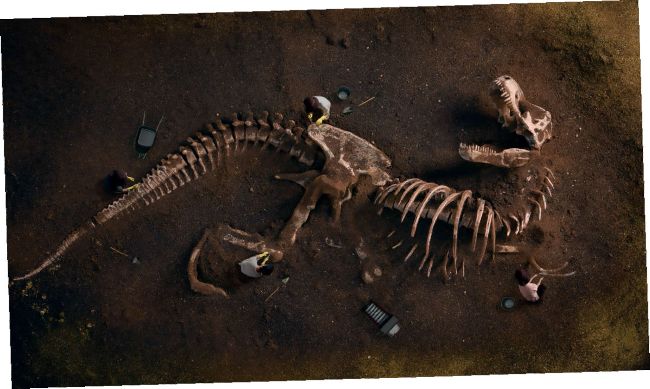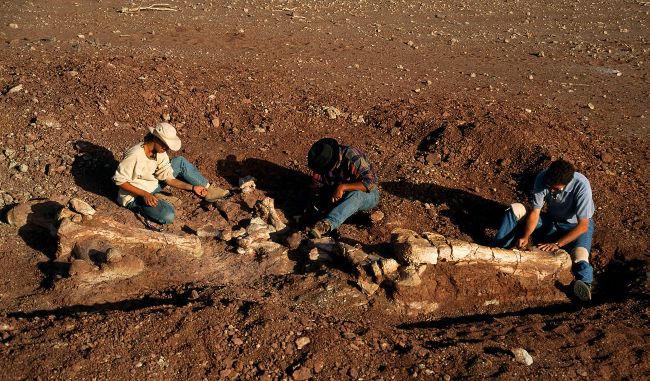DIGGING FOR DINOSAURS
Discover how a fossil hunter recently discovered a new ancient species. Could you make the next big find?
Words by Ailsa Harvey
How do you look for something that you aren’t yet aware existed, from a world you can only try to imagine? It might seem impossible for us to study a species that we have never coexisted with, but this is something palaeontologists and fossil hunters do every day.

Though rarer, entire skeletons have been found perfectly preserved
© Shutterstock

Excavating is a slow process to avoid damaging the find
© Getty
When humans first encountered dinosaurs, they had been extinct for over 65 million years. Everything we have come to know about dinosaurs today has been learned through our understanding of the planet’s geology and analysing the ancient remains of these creatures. For this to happen, dinosaurs needed to have a lasting impact on the world, enduring tens of millions of years held inside solid rock. Luckily the remains of many types of dinosaur were preserved in the ground until humans could uncover them - and their secrets.
Fossils are impressions of ancient life, contained in the Earth’s crust as a memento of life before the present. To palaeontologists they are hidden treasures, each with valuable information to share about a past geological and environmental age. The secret to their lasting form comes from the way they died. To become a fossil a dinosaur needed to take its last breath near water, or to have been buried alive.
Most dinosaurs wouldn’t have died this way, so their remains would have deteriorated and can never be discovered. However, even for those that perished in one of these two ways, their bodies had to be surrounded by certain essential minerals to convert them into rock. Fossils are formed deep underground, where oxygen levels are so scarce that no bacteria can survive there. This means the body is unable to decay and lose its shape.
It’s odd to think that these bones could be frozen in time only to be neatly retrieved from the ground as an almost-undisturbed stone skeleton. In some cases, not only are scientists presented with a perfect anatomical specimen to study, but they get an insight into a day in the life of a dinosaur - albeit their last day. Those that were suddenly buried alive can be retrieved in the exact position they died in. These are extremely rare fossils, but can provide information about the way a species lived.
Around the world, new dinosaur species are constantly emerging from rock faces, sandy dunes and clay-rich soils. But why are they being found now? To retrieve a fossil from sediment, the dinosaur first needs to be within reach. Sometimes it simply means being in the right place at the right time. You need to be near the land where the fossil has been held for millions of years just after the forces of nature have removed its rocky casing. The fossil then needs to be retrieved before the conditions above the ground erode or damage it and render it unrecognisable. The reason that the number of finds has increased in recent years is in large part due to our expanding knowledge of the dinosaurs and the evolving technology that helps us to study them.